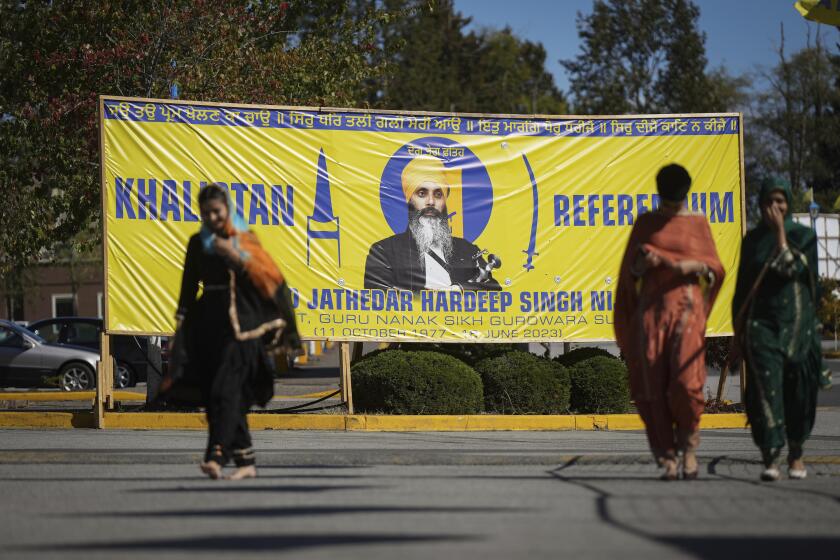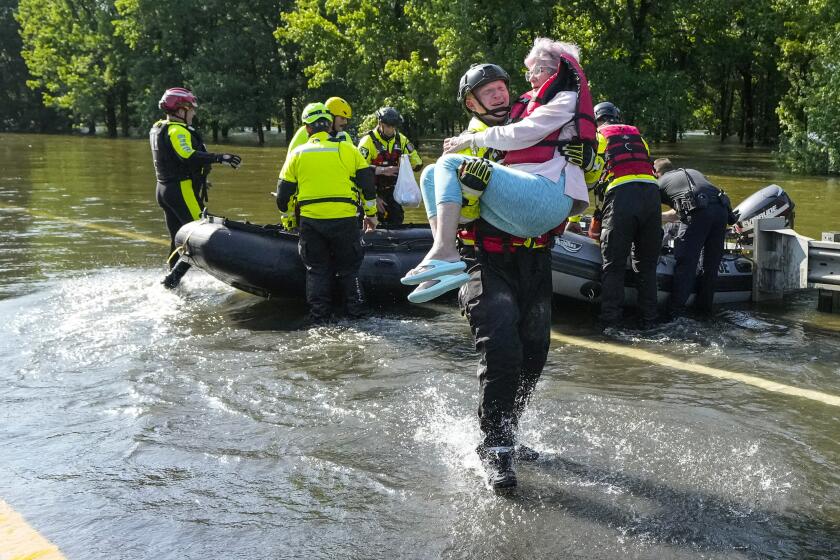Kaczynski Diary Says, ‘I Sent Bomb,’ U.S. Claims
In a handwritten journal found in his Montana cabin, Unabomber suspect Theodore J. Kaczynski tied himself directly to a deadly, coast-to-coast trail of 16 bombings and expressed “his desire to kill,” a federal prosecutor said Friday.
In a number of instances, the daily journal entries simply note, “ ‘I mailed that bomb.’ ‘I sent that bomb,’ ” Assistant U.S. Atty. Robert Cleary said during a federal court hearing on the status of the case.
He described a foot-long stack of documents seized at the tiny cabin as “the backbone of the government’s case” against Kaczynski, a onetime UC Berkeley math professor. If corroborated, the journal entries could provide prosecutors with a valuable weapon to use against Kaczynski--his own words.
Cleary said many of the entries in the “day-to-day journal” simply chart Kaczynski’s regular routine, noting that he walked into the woods or that he ate dinner.
But more important, he said, was Kaczynski’s “detailed admission to each of the 16 Unabomber devices.”
Bits of forensic evidence picked up at the secluded cabin near Lincoln, Mont., Cleary said, also allegedly connect Kaczynski to the bombings. “The typewriter we found in the cabin ties into a lot of Unabomb documents and mailing labels,” Cleary said.
At the hearing, prosecutors for the first time also said they expect U.S. Atty. Gen. Janet Reno to decide by the end of the year whether Kaczynski should face the death penalty.
The murder-by-bombing charges against the Harvard-educated mathematician could carry the death penalty.
In June, Kaczynski, 54, was indicted on charges that he engineered four separate attacks that killed two Sacramento men and maimed a UC San Francisco geneticist and a Yale University computer scientist. Kaczynski, who was not in court Friday and remained in his Sacramento jail cell, has pleaded not guilty to the charges.
Cleary, brought in from New Jersey to head the federal prosecution team, did not hint at whether Kaczynski’s journal suggested any motives for his alleged attacks.
After Kaczynski’s arrest in April, the government released a list of evidence removed by FBI agents from his cabin, including bomb components, notebooks and typewriters that allegedly tied him to the string of 16 bombings starting in 1978 that killed three and injured 23. The final attack was in 1995 in Sacramento.
Cleary’s revelations marked the strongest preview yet of the prosecution’s case and showed the relevance of notebooks taken from the cabin.
Quin Denvir, the federal public defender in Sacramento and one of Kaczynski’s attorneys, refused to discuss the diary allegedly kept by his client.
He told a throng of reporters outside the courthouse that “the prosecution has one view of the case. We have another view of the case, and it will come out in trial. . . . [Cleary] can talk about anything he wants in front of the judge. It’s a free country.”
Attempting to move the case forward, Cleary made the disclosures as he argued that volumes of material found at the cabin and turned over to Denvir are sufficient for defense lawyers to be ready to proceed to trial March 31.
Citing 22,000 documents found at Kaczynski’s cabin, Cleary told U.S. District Judge Garland E. Burrell Jr. that “this is not a circumstantial case.”
Underscoring how he has cooperated with Denvir, Cleary said he has “made sure the defense had the material from Day 1.”
Denvir and co-counsel Judy Clarke, a federal public defender based in Spokane, Wash., argued that the federal government has been investigating the bombings since 1978 and that the two defense lawyers can’t be expected in just a few months to have a complete grasp of the extremely complicated case.
Clarke said much of the material turned over to the defense was in a jumble, assembled in unwieldy paper-towel size rolls in no particular order. As a consequence of this format, Clarke said, the defense has been hamstrung in organizing the paperwork, including 15 boxes of photographed documents.
Cleary indicated that the documents were given to the defense in the same disorganized fashion in which they were taken from Kaczynski’s cabin.
Responding to questions from Burrell, Cleary said he expects the trial to last three to four months, and he urged that it begin at the end of March.
Denvir did not disagree with the time estimate for the trial, but said he is sticking by his view that the proceedings should be delayed until the second half of 1997.
Late Friday, Burrell indicated he would postpone a decision on the issue of the trial date until Nov. 22.
In recent weeks, Kaczynski’s mother and his brother, David, have been mounting a campaign aimed at keeping Kaczynski off death row, citing his previous mental disturbances.
Their efforts pose a difficult ethical dilemma for prosecutors because David Kaczynski was the first to suggest to the government that a 35,000-word Unabomber manifesto published by the New York Times and Washington Post paralleled his brother’s writings on the inhumanity of industrial society.
In June, Kaczynski was charged in a 10-count indictment that included the 1985 bomb attack that killed Sacramento computer store owner Hugh Scrutton and the 1995 slaying of lobbyist Gilbert Murray, president of the California Forestry Assn.
The suspect also was indicted in two bombings that injured UC San Francisco geneticist Charles Epstein and Yale University computer scientist David Gelernter.
Kaczynski has been indicted in three of the other Unabomber attacks in Utah, Tennessee and Michigan.
More to Read
Start your day right
Sign up for Essential California for news, features and recommendations from the L.A. Times and beyond in your inbox six days a week.
You may occasionally receive promotional content from the Los Angeles Times.






